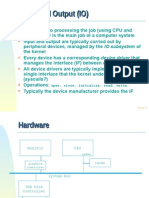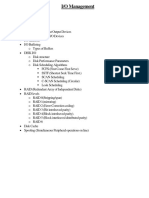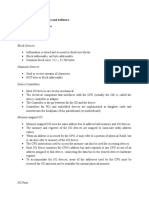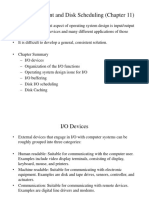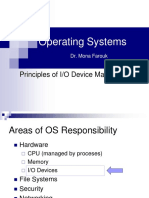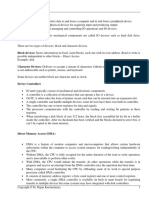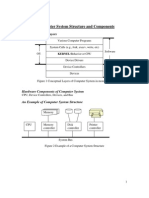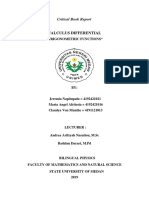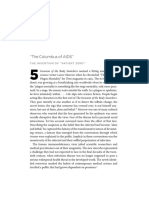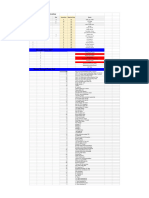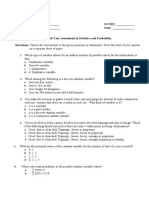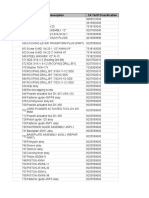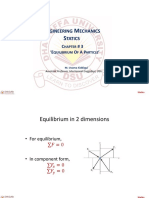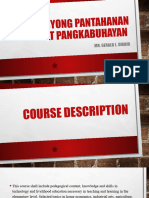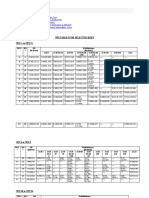0% found this document useful (0 votes)
27 views34 pagesChapter 4 - Opreating System
This document discusses device management in operating systems. It covers different types of I/O devices including human readable, machine readable, and communication devices. It also discusses differences between I/O devices like data rate and complexity of control. The document outlines three techniques for I/O - programmed I/O, interrupt-driven I/O, and direct memory access. It also discusses device drivers, buffering, disk structure and performance, and disk scheduling algorithms.
Uploaded by
Baruk Umeta DegoCopyright
© © All Rights Reserved
We take content rights seriously. If you suspect this is your content, claim it here.
Available Formats
Download as PDF, TXT or read online on Scribd
0% found this document useful (0 votes)
27 views34 pagesChapter 4 - Opreating System
This document discusses device management in operating systems. It covers different types of I/O devices including human readable, machine readable, and communication devices. It also discusses differences between I/O devices like data rate and complexity of control. The document outlines three techniques for I/O - programmed I/O, interrupt-driven I/O, and direct memory access. It also discusses device drivers, buffering, disk structure and performance, and disk scheduling algorithms.
Uploaded by
Baruk Umeta DegoCopyright
© © All Rights Reserved
We take content rights seriously. If you suspect this is your content, claim it here.
Available Formats
Download as PDF, TXT or read online on Scribd
/ 34



